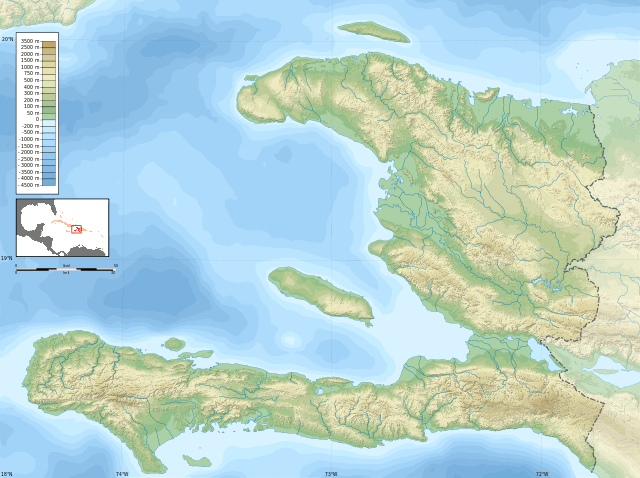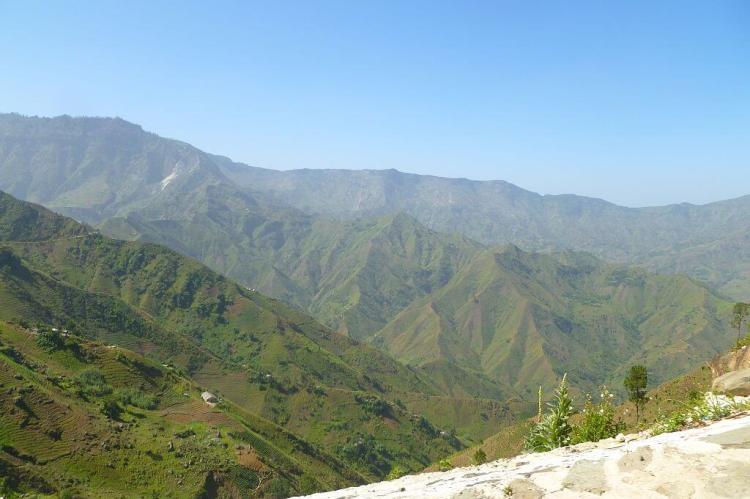The Majestic Massif de la Selle: Haiti's Natural Jewel
The Massif de la Selle is a prominent mountain range in southwestern Haiti on the island of Hispaniola. It is known for its rugged terrain, abundant biodiversity, and the highest elevation in Haiti, Pic la Selle. The area is significant for natural preservation and human development.
The Massif de la Selle: A Haven of Biodiversity and Cultural Significance
The Massif de la Selle is a prominent mountain range located in southwestern Haiti on the island of Hispaniola. Known for its rugged terrain and abundant biodiversity, the Massif de la Selle stretches east-west for approximately 45 miles (72 kilometers). This mountainous region boasts the highest elevation in Haiti, with its pinnacle, Pic la Selle, soaring to 2,680 meters (8,793 feet) above sea level. The geographic, ecological, and socio-economic significance of the Massif de la Selle is profound, making it a critical area for both natural preservation and human development.
The region faces various challenges, including deforestation, climate change, and socio-economic hardships, which threaten its stability and biodiversity. However, numerous efforts are underway to protect and sustain this vital natural treasure, emphasizing the importance of reforestation, conservation, and sustainable development to ensure the Massif de la Selle remains a vibrant and thriving ecosystem.
Geographic and Geological Significance
A Long and Narrow Range
The Massif de la Selle forms part of a long, narrow range of mountains stretching about 100 kilometers (62 miles) from east to west. The range is geologically divided into two primary sections: the Massif de la Selle in the east and the Massif de la Hotte in the west. This division highlights the region's geological complexity and varied landscape.
Tectonic Formation
The Massif de la Selle was formed by the collision of two major tectonic plates: the North American Plate and the Caribbean Plate. This collision has created a geologically diverse range composed of various rocks, including limestone, shale, and sandstone. The mountains also feature numerous caves and sinkholes, adding to their geological intrigue.
Hydrological Importance
The Massif de la Selle plays a crucial role in Haiti's water supply. As a natural reservoir, the mountains help regulate the country's climate by trapping moisture from the Caribbean Sea. The rivers originating from this range are vital for agriculture, particularly in the Cul-de-Sac plain, one of Haiti's most important agricultural regions. Notably, the Artibonite River, the largest river in Haiti, flows from the Massif de la Selle into the Gulf of Gonaïves.
Rich Biodiversity
Flora and Fauna
The varied elevations and microclimates of the Massif de la Selle support an impressive array of plant and animal species, many of which are endemic to the region. The Massif's forests are home to a plethora of bird species, including the Hispaniolan emerald, the Hispaniolan solenodon, and the Hispaniolan parrot. The mountains also provide a habitat for several reptile species, such as the Hispaniolan giant anole.
Endemic Species
The uniqueness of the Massif de la Selle's ecosystem is underscored by the presence of species found nowhere else in the world. This endemic biodiversity makes the mountain range an invaluable natural heritage site worthy of protection and study.
Challenges Facing the Massif de la Selle
Deforestation
Deforestation is one of the most pressing issues confronting the Massif de la Selle. Over the past few decades, extensive logging and land clearance for agriculture have significantly reduced forest cover. This deforestation has led to severe soil erosion, increased frequency of landslides, and heightened risk of flooding.
Climate Change
Climate change poses a significant threat to the Massif de la Selle. Rising temperatures and changing precipitation patterns are making the mountains warmer and drier. These changes result in water shortages and increased susceptibility to wildfires, further endangering the local flora and fauna.
Socio-Economic Challenges
The communities residing in the Massif de la Selle are among the poorest in Haiti. This economic hardship limits their capacity to address environmental degradation and implement sustainable practices. Poverty exacerbates the challenges of conservation and reforestation, creating a cycle of environmental and socio-economic vulnerability.
Efforts to Protect and Sustain
Reforestation Initiatives
Several reforestation projects have been initiated to combat deforestation. These projects aim to restore forest cover, thereby reducing soil erosion, mitigating landslides, and preventing flooding. Reforestation efforts are crucial for maintaining the ecological balance of the Massif de la Selle.
Conservation Efforts
Numerous conservation organizations are working to protect the rich biodiversity of the Massif de la Selle. These organizations focus on raising awareness about the range's ecological significance and implementing measures to preserve its unique plant and animal life.
Sustainable Development Programs
Promoting sustainable development is essential for the well-being of the communities in the Massif de la Selle. Various organizations are working to improve the quality of life for these communities through initiatives that encourage sustainable agricultural practices, enhance local economies, and build resilience against environmental challenges.
Conclusion
The Massif de la Selle is a testament to Haiti's natural beauty and ecological importance. Its towering peaks, rich biodiversity, and vital role in water regulation make it a critical region for environmental and socio-economic reasons. Despite its significant challenges, concerted efforts in reforestation, conservation, and sustainable development offer hope for preserving this magnificent mountain range for future generations.

Topographic map of Haiti. The Massif de la Selle is on the lower right.
